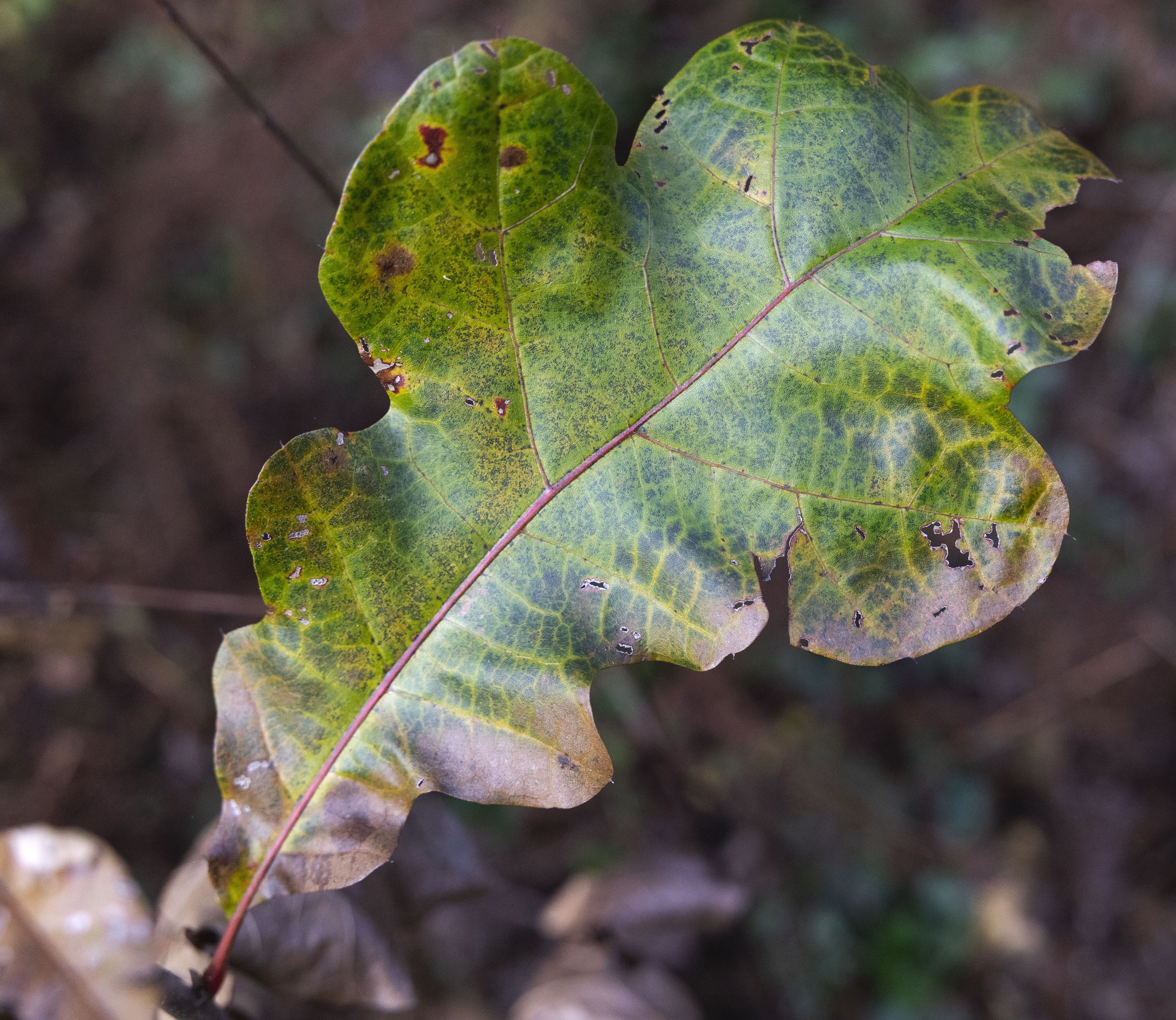Leaf Structure
I find the construction of leaves fascinating. Their symmetrical construction, color changing phenomenon and the myriad of easily accessible different shapes, sizes and colors make them an easy study. Their nature is to constantly change in size, shape and color. This allows them to be a constant study and interesting subject for pictures any time of the year.
The Main Parts of a Leaf
Leaf Blade or Lamina - The leaf blade is the large, broad, flat surface structure that collects light and conducts photosynthesis. It makes up the majority of the physical space of leaves.
Petiole - The petiole is the main stalk that joins the leaf blade to the stem located at the base of the leaf. It’s able to twist to allow the leaf to face the sun.
Veins - Smaller veins run off from the midrib, a strengthened vein that runs down the middle of the leaf. These veins are used for support and transport of water, food and nutrients throughout the leaf.
Functions of a Leaf
Photosynthesis - The primary fuction of a leaf is to conduct photosynthesis and turn CO2, water and sunlight into food that the plant can consume to help it grow
Oxygen Creation - O2 is a bi-product of photosynthesis which is a critical part of our eco-system. Rainforests account for roughly 1/3 of the earths oxygen.
Protection - Leaves provide protection from the environment and from predators. They disguise and cover a wide range of animals to hide them. They also provide protection from the strong sun, rain, sleet or snow. The shade they create provides a unique environment that wouldn’t be possible under a strong sun.
Replenish Soil - When leaves fall from the tree onto the ground they decompose. Invertebrates and Microbes eat fallen leaves helping them turn back into fertile soil to be re-used to help foster new growth.
Leaf Colors
Most leaves appear green since the main molecule that conducts photosynthesis, chlorophyll, is green. It’s green in color because it absorbs the non-green spectrums of light to conduct photosynthesis while reflecting green light.
Plants that are not green still contain the green chlorophyll molecule, however, the other chemicals in these leaves are in higher than normal concentrations and overpower the green color of chlorophyll.
Plants “true colors” only show themselves when they create a barrier layer at it’s stem to stop allowing water from the tree to enter the leaf. This occurs when the leaf is damaged or when the weather gets too cold for the leaf. Once water is cut off from the leaf the chlorophyll molecules die leaving the remaining “true colors” of the leaf to shine through.
Fall Foliage
Three main factors determine the onset of Fall Foliage or the change in color of leaves: temperature, hours of sunlight and weather. Scientists have an understanding that these three factors influence the timing but the precise timing each year still cannot be predicted.
As temperatures get colder and days get shorter trees start to create a barrier between the tree and the leaf to protect itself from the harsh winter weather. This barrier not only protects the tree but also cuts off water to the leaves stifling the photosynthesis process and killing the chlorophyll molecules that rely on water to replicate and survive.
There are three pigments that give leaves their color: carotenoids, anthocyanin and chlorophyll. In the spring and summer when the days are long and the temperature warm, chlorophyll thrives giving most leaves their strong green color. When the tree cuts off the water supply the chlorophyll dies allowing a leafs “true colors” to shine. Carotenoids produce yellow, orange, and brown colors in leaves such as maple, hickory, ash and aspen. Anthocyanin produces reds or purples as seen in oaks and dogwoods. Each leaf has its own unique chemical makeup which is how it gets its fall or “true” colors.












